What Life is Really Like in North Korea
Peering through the opaque curtain veiling North Korea, one glimpses a nation shrouded in mystery, myth, and meticulous control. Beyond the grandiose displays of state propaganda and the enigmatic persona of its supreme leader lies the stark reality endured by the average North Korean citizen. Exploring life within the hermit kingdom unveils a landscape marked by authoritarian rule, economic hardship, and pervasive state surveillance.
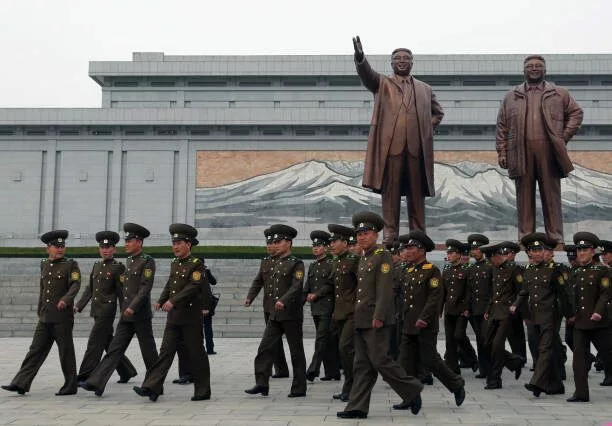
To truly understand the essence of North Korea is to delve into the everyday experiences of its people—those navigating a labyrinth of restrictions, propaganda, and survival strategies amidst the isolated confines of their homeland. Join us on a journey to unravel the layers of secrecy and uncover the truth about life for the average North Korean citizen amidst the shadows of the world’s most secretive regime.
Lack of Travel Options
In the realm of North Korean travel, glimpses into the nation’s internal dynamics reveal a scene where dated buses, akin to relics from 1965, serve as the primary mode of transportation. Stripped of modern comforts like air conditioning and heating, these buses carry passengers across the country’s rugged terrain.
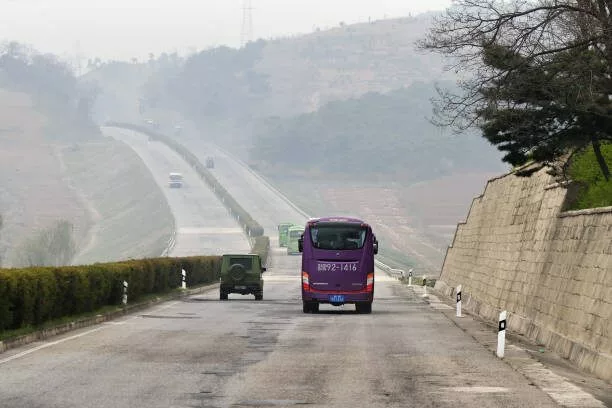
Yet, for the average North Korean, the mere prospect of boarding such a vehicle is an object of envy, representing a chance to escape the confines of their village and explore the wider world.
Luxury Goods
In a glimpse into the opulent lifestyles of Pyongyang’s affluent sector, we find a lavish grocery store catering exclusively to the elite. Amidst widespread food scarcity across the nation, this select group enjoys unfettered access to luxury goods, including Dove shampoo, Hennessey, Hugo Boss cologne, and Victoria’s Secret perfume, alongside an abundance of fresh produce.

Surprisingly, soda is also on offer, a commodity likely unimaginable to the average North Korean, who remains largely unaware of the opulence enjoyed by their privileged compatriots.
Bowling for Pyongyang
It’s evident that bowling holds a peculiar allure for North Koreans, as illustrated by the enthusiasm of these two girls captured in the photograph. Despite the regime’s tight control, Pyongyang boasts several regulation-sized bowling alleys, presumably reserved for the elite class.

This fascination with bowling is emblematic of North Korea’s stagnant approach to leisure activities, underscoring its adherence to a cultural landscape reminiscent of the mid-1990s.
Military Galore
In every nook and cranny of North Korea, the military maintains a constant presence, meticulously surveilling even the most remote villages and towns. Tasked with maintaining strict order and preventing any hint of dissent, these soldiers stand as vigilant guardians of the regime’s authority.

With the world’s largest military force primarily geared toward deterring a potential US invasion, soldiers often find themselves with idle time on their hands. In this instance, a soldier assumes the role of a crossing guard for a train, a duty necessary despite the train’s infrequent weekly schedule.
Dated Subway
The North Korean underground transit network stands out as one of the world’s most enigmatic systems. Adorned with grandiose murals depicting the revered “great leaders,” the stations boast opulent features like dazzling lights, marble flooring, and gilded chandeliers. Even the subway cars themselves are adorned to the utmost extravagance. Despite these lavish embellishments, an air of mystery shrouds the subway, with no visible maps for commuters or tourists.
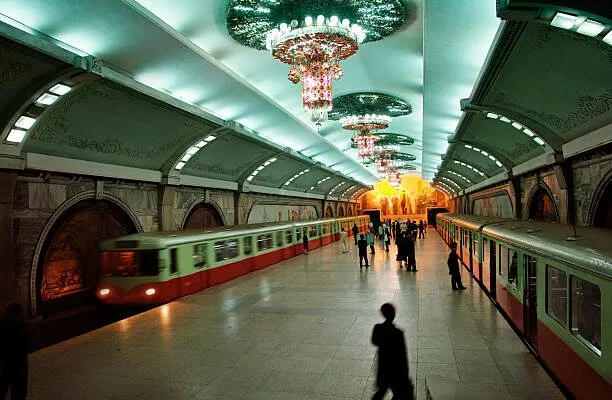
In fact, the vast majority of visitors have only ever glimpsed two stations at most. Unbeknownst to many, the subway system also serves a dual purpose as a massive bomb shelter, capable of accommodating tens of thousands of people in times of crisis.
Taxis for the Rich
Private enterprise remains strictly prohibited in North Korea, rendering the notion of accessing ride-sharing services like Uber or Lyft a futile endeavor. Instead, the streets are teeming with state-owned taxis, omnipresent for those fortunate enough to be on an authorized tour.

However, these taxis are primarily accessible to the privileged elite, notorious for their adeptness at channeling wealth into their own pockets, perpetuating the cycle of poverty among the populace. This stark reality serves as a testament to the implementation of true communism in the nation, where economic disparity is glaringly evident.
Cars are a Luxury
In the hinterlands of North Korea, the absence of infrastructure is glaring, evoking a sense of stagnation reminiscent of post-World War II landscapes. This desolate dirt path, serving as a rural train station, epitomizes the state of development in these remote areas. However, despite the presence of such rudimentary infrastructure, villagers find themselves largely disconnected from the benefits of modern transportation.

North Koreans are subjected to stringent government regulations, requiring special authorization to venture beyond their villages, rendering the train station practically inaccessible to the local populace. One can’t help but wonder if the funds earmarked for infrastructure were diverted towards other endeavors, perhaps the country’s military ambitions.
Going for a Walk
In the confines of North Korea, a nation ensnared by poverty and governed by a strict communist regime, car ownership remains a luxury reserved solely for the affluent elite. Hindered by a stagnant economy that mirrors the early 20th century, the populace has yet to embrace a culture of widespread automobile usage.
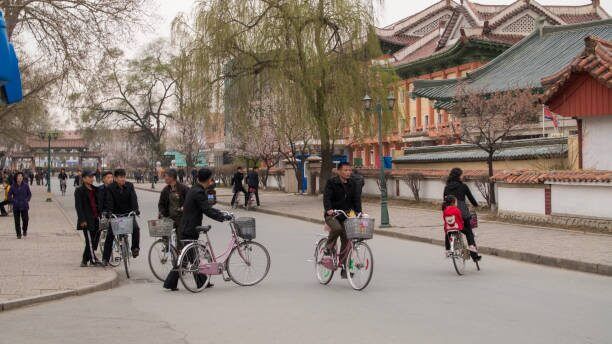
Consequently, the streets are often populated by pedestrians, resigned to the reality that the odds of encountering a vehicle are nearly negligible. This scene underscores the enduring challenges faced by ordinary North Koreans amid a backdrop of economic stagnation and government control.
Child Labor Standards
Contrasting with the urban children depicted earlier, who hail from relatively privileged backgrounds in Pyongyang, these rural youngsters face a markedly different reality. Tasked with the arduous chore of fetching water for their impoverished families, they trudge along dirt paths, emblematic of the lack of infrastructure plaguing their countryside dwellings.
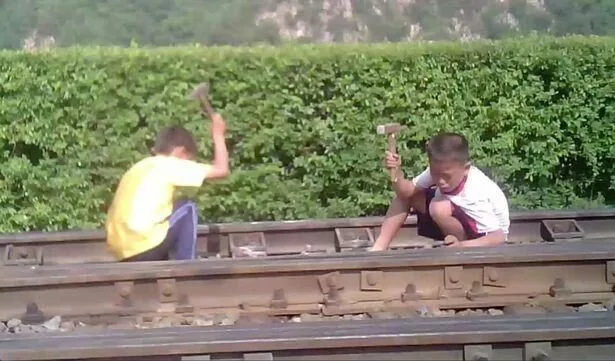
The absence of paved roads underscores the challenges endured by those residing in remote areas, shedding light on the stark disparities that persist within North Korean society.
Is Anybody Home?
Among the architectural marvels of North Korea stand these sleek, ultra-modern buildings, touted as symbols of national pride and splendor. Tour guides often highlight these structures as prime attractions for visiting tourists. Ostensibly housing offices for prestigious institutions like law firms, engineering companies, and accounting firms, these buildings exude an air of prosperity and progress.
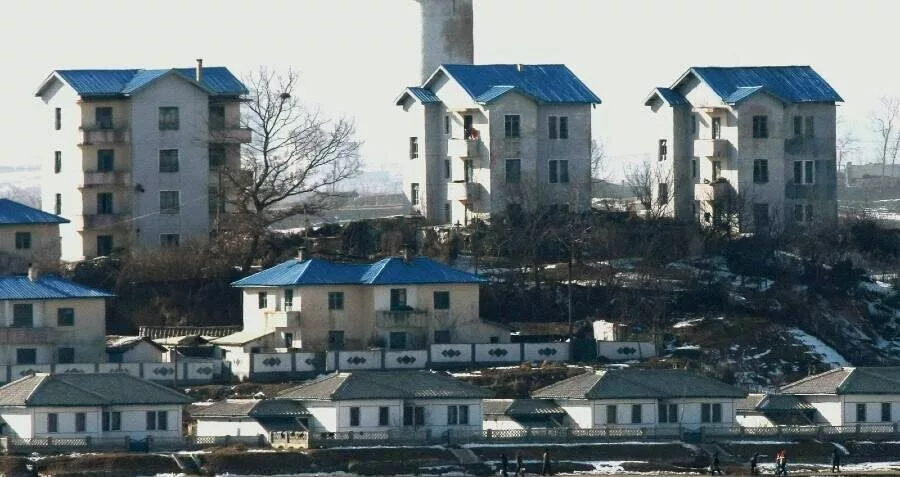
Yet, beneath their polished facades lies a different reality. Many of these edifices are mere facades, devoid of any genuine functionality. Abandoned and uninhabited, the majority remain disconnected from the electric grid, serving as hollow monuments to the regime’s facade of prosperity.
Abandoned Bridge
Standing as a grand testament to engineering prowess and international cooperation, this expansive and elegantly illuminated bridge captures attention. Initially presumed to be a symbol of North Korean might, it is in fact China’s impressive Friendship Bridge, costing a staggering $350 million. Linking the Chinese metropolis of Dandong with the North Korean town of Ponbu-Dong, this structure embodies diplomatic goodwill and economic partnership.
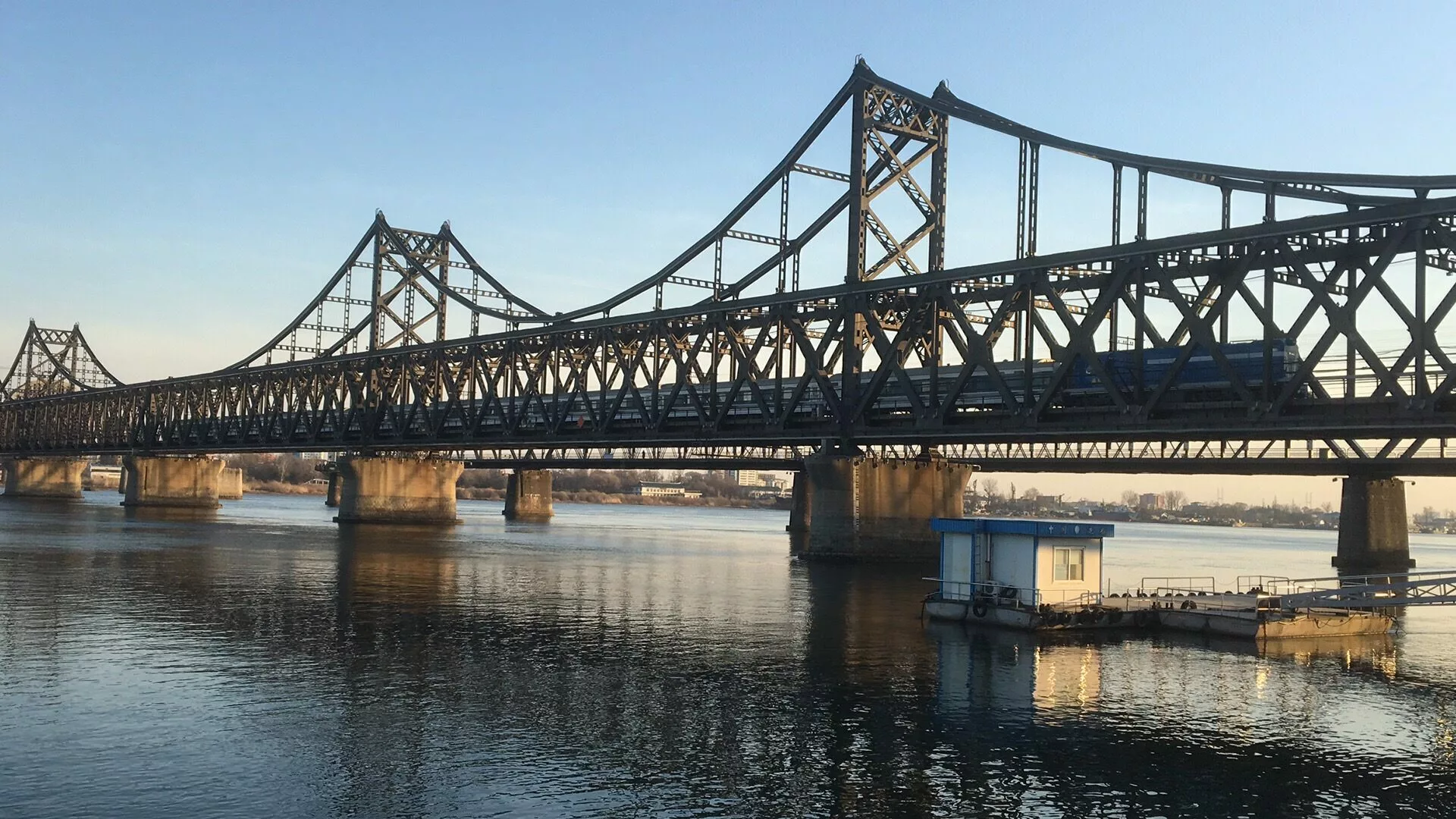
However, the North Korean segment remains incomplete, terminating abruptly into a dirt road with no sign of development. Notably absent is a customs office, highlighting the stark disparity between the two nations’ infrastructural capacities.
Gender Separation
In the fabric of North Korean social norms, a notable phenomenon emerges: the frequent sight of women, and occasionally men, strolling hand in hand, as depicted in this image. This practice reflects the deeply entrenched gender divisions within North Korean society, where traditional roles dictate distinct spheres for men and women.
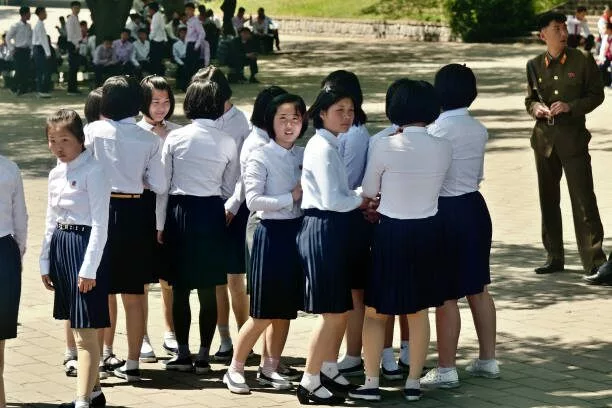
Women, in particular, forge strong bonds with one another, often laboring together exclusively throughout the day. This pattern underscores the nuanced dynamics of gender relations within the nation, offering insight into the intricacies of daily life in North Korea.
State-Organized Tours
Exploring North Korea requires participation in state-organized tours, as private options are scarce. Visitors typically traverse the country in large tour buses, shuttled from one prescribed site to another. Engaging with ordinary citizens necessitates state vetting, ensuring adherence to the official narrative.

However, navigating off the beaten path poses risks, as getting lost could lead to dire consequences—both the traveler and their guide could find themselves confined in a concentration camp.
In the Dark
In North Korea, persistent fuel scarcities translate into sporadic access to electricity, with only the capital, Pyongyang, enjoying more than a fleeting few hours of power each day. Satellite imagery of the country by night reveals a stark landscape cloaked in darkness.

Yet, here’s a rare glimpse of illuminated apartment buildings in Pyongyang, a testament to fleeting moments of illumination amidst the pervasive blackout. However, once the lights dim, the city plunges into profound darkness, emblematic of the energy crisis gripping the nation.
Isolationism
Earning the moniker of a “hermit kingdom,” North Korea has garnered renown for its isolated existence, shielded from the global community. Dating back to the Joseon dynasty, the nation implemented strict measures to sever ties with the outside world, avoiding foreign contact or exchange.

Since the late 1950s, state-controlled media has served as the primary conduit for news and information dissemination within the country, shaping the populace’s worldview and perpetuating its insular tendencies.
Tourists, Few and Far Between
While securing a tourist visa to the reclusive Hermit Kingdom poses significant challenges, a nascent tourism sector has emerged. Increasing numbers of Japanese, Chinese, Europeans, and even Americans are venturing to explore the country’s enigmatic depths, driven by a desire to unveil the mysteries hidden beneath its veil of secrecy.
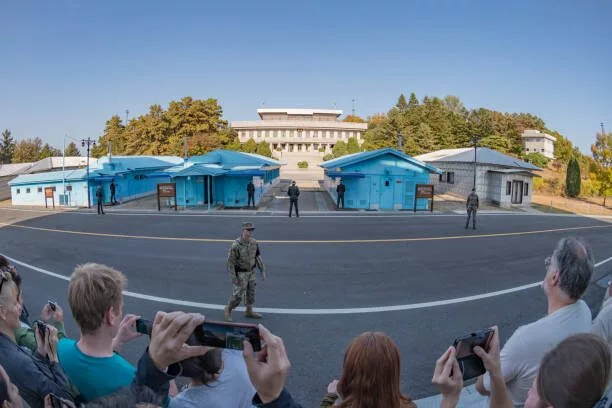
A distinctive feature of touring North Korea is the discernible presence of North Korean actors amidst the populace. These actors seamlessly mingle with tour groups, engaging with government minders and answering questions, providing a stark contrast to the awestruck gaze of the average citizen encountering foreign visitors.
The Cult of Personality
In stark contrast to Western nations where Christianity dominates or Far Eastern countries embracing Buddhism, Shintoism, and Hinduism, North Korea’s predominant religion revolves around reverence for its leaders. At the helm is Kim Il Sung, purportedly “105 years old,” who embodies the pinnacle of their worship.
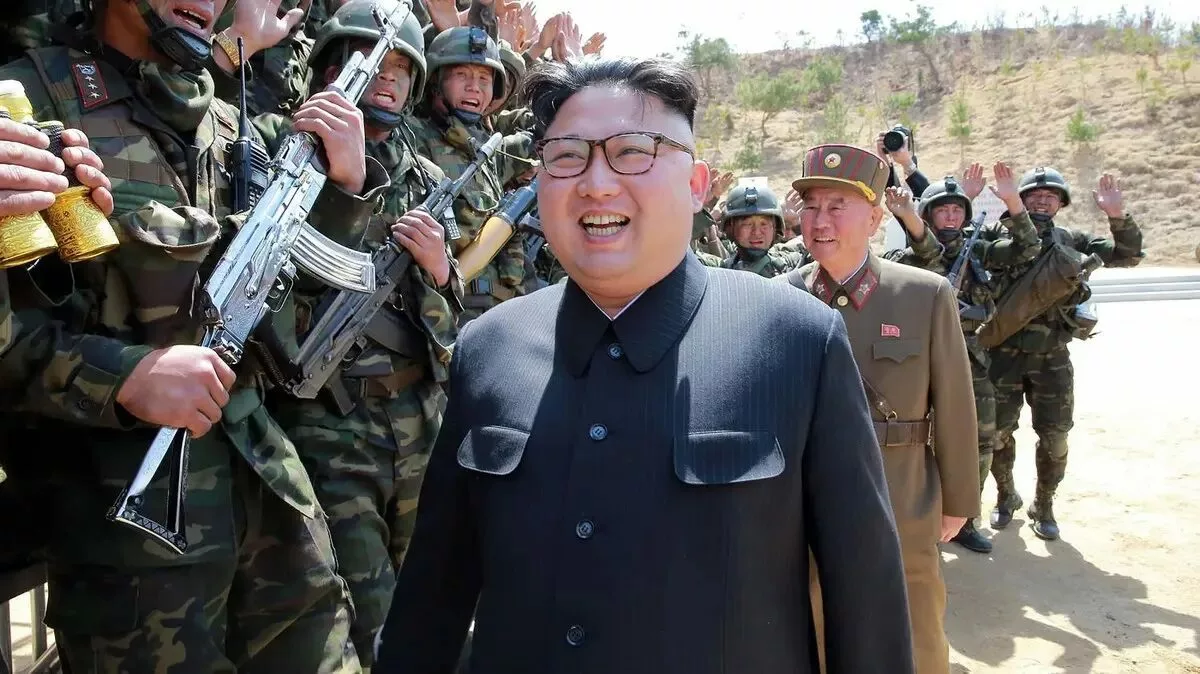
The Kim dynasty has cultivated a cult of personality around their family, elevating them to divine status. Thus, the sight of people bowing before statues represents not mere respect but the deification of their rulers.
Hot Dog Lovers
Amidst the bustling scene of floating restaurants and department stores in Pyongyang, a curious culinary tradition thrives: the indulgence in local hot dogs and milkshakes. Each year, during the Magnificent Bounty Harvest Festival, a unique event unfolds—the annual hot dog eating contest.
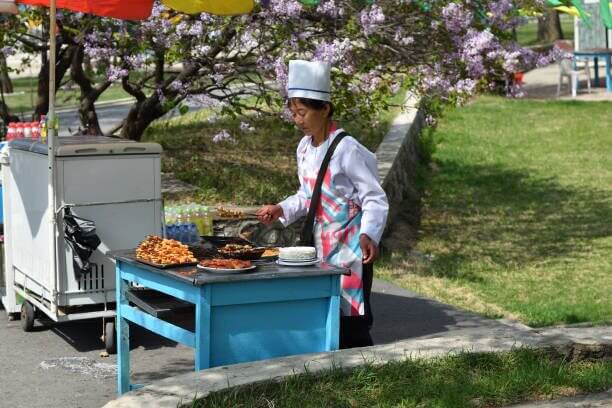
However, the competition deviates from the conventional eating contest format; instead of consuming hot dogs to claim victory, participants engage in hand-to-hand combat. The coveted prize? A hot dog paired with a refreshing cold Pepsi, symbolizing the pinnacle of culinary achievement.
Lack of Goods
Captured clandestinely during a recent excursion to North Korea by acclaimed French photographer Eric Lafforgue, this bustling supermarket offers a rare glimpse into everyday life in the reclusive nation. Despite the apparent abundance depicted in the image, the reality of widespread hunger looms large.

Plagued by inefficient farming methods, North Korea grapples with chronic food shortages, forcing families to rely on meager rations. Amidst the sparse offerings, turnips, leeks, apples, and potatoes stand as the limited options available for sustenance—a stark reminder of the harsh realities faced by many in the country.
Work Environment
In the typical 9-to-5 office environment of North Korea, personal computers remain indispensable tools for productivity. Women play a pivotal role in the country’s economy, yet they continue to face significant wage disparities compared to men.

Notably, mothers with three or more children enjoy a reduced workday, capped at six hours. Conversely, those with two children or fewer, including single women, are mandated to fulfill the standard eight-hour workday.
A Reclusive Nation
As per the official stance of the North Korean government, the entirety of the Korean peninsula falls under its jurisdiction. Interestingly, North Korea eschews the label “North Korea” in favor of the title “Democratic People’s Republic of Korea,” despite the absence of democracy or republicanism within its borders.
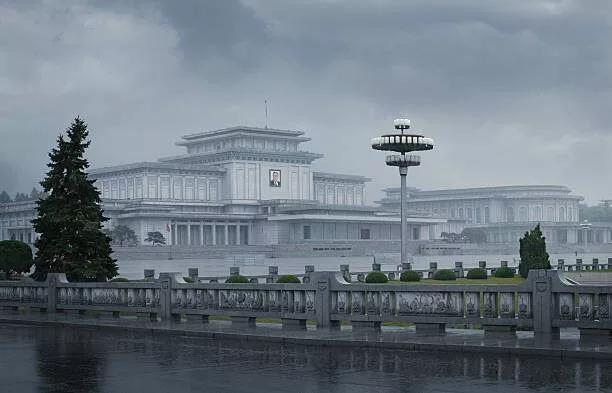
This reclusive nation maintains only four recognized allies globally: China, Sudan, Syria, and Iran.
Lack of Food and Malnutrition
Comparisons drawn between North Korean farming methods and those employed in 18th-century Europe reveal a glaring lack of mechanization and efficiency. The repercussions of such antiquated practices manifest in widespread starvation among the populace, underscoring the nation’s inability to produce sufficient food resources.
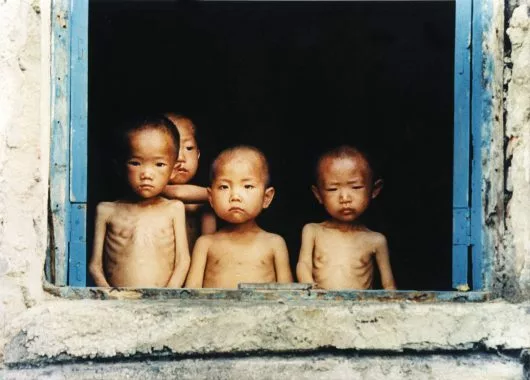
In response to this dire situation, the government has disseminated cookbooks outlining unconventional survival strategies, including recipes for consuming various grasses and shrubs, instructions for preparing tree bark soup, and tips for trapping and skinning squirrels for sustenance.
Success Through Service
The North Korean military boasts the world’s largest manpower, with mandatory service lasting approximately five years for all citizens. Those with the right connections can ascend to officer ranks, guaranteeing a decent salary to support their families and access to proper grocery stores.
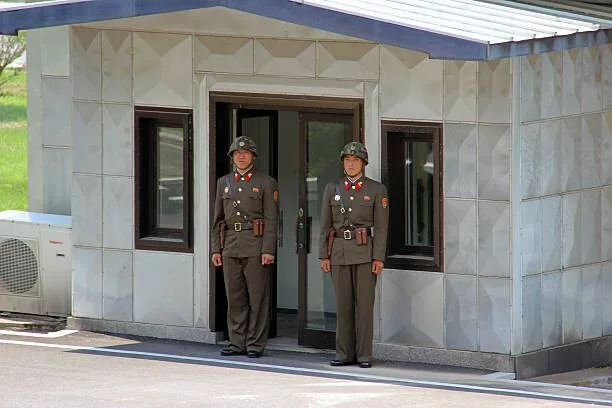
However, car ownership remains an unattainable luxury for most, despite these perks.
Military Might?
During his train journey through North Korea’s rural landscape, photographer Eric Lafforgue stumbled upon a curious sight that caught his attention. Swiftly capturing the peculiar scene, Lafforgue observed what initially seemed like ordinary individuals riding in the back of a pickup truck—an occurrence not uncommon in rural America. However, upon closer examination, it became evident that these passengers were none other than soldiers from the esteemed North Korean military.
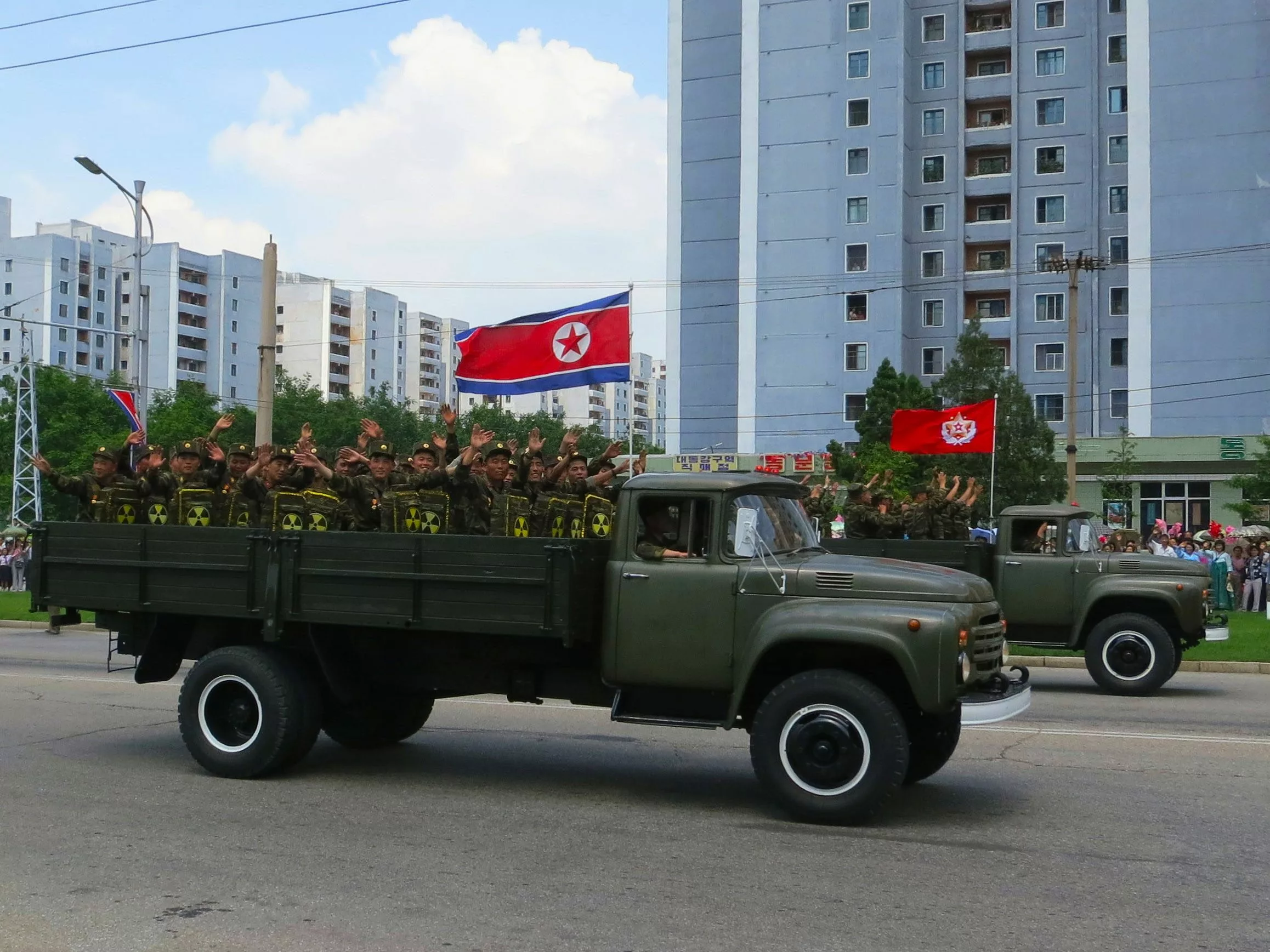
The unconventional mode of troop transport depicted in the photograph raises questions about the efficacy of their military operations, suggesting perhaps less cause for global concern than previously assumed.
Korean Discontent
While the North Korean regime diligently crafts an image of utopian communism—a land of full employment, towering structures, and perpetually cheerful citizens—photographer Eric Lafforgue unveils a contrasting reality through covert photography.
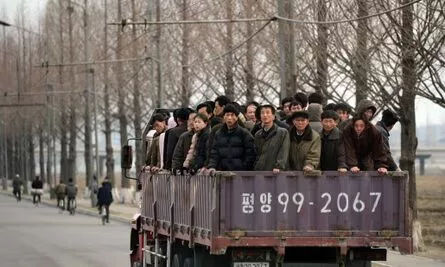
In this revealing snapshot, average North Koreans trudge to work with palpable expressions of discontent, their somber demeanor belying the facade of contentment projected by their leaders.
Everyone Must Contribute
In the bustling streets of Pyongyang, these women diligently carry out the task of street cleaning. Despite the nation’s chronic fuel shortages and sparse vehicular traffic, the regime sees fit to employ elderly women in the arduous task of sweeping the streets for hours on end.

Under the watchful eye of a vigilant military officer, tasked with ensuring their compliance and diligence, these women perform their duties with unwavering dedication. Yet, the potential for discontent and dissent looms large, raising the possibility that these seemingly mundane street sweepers could ignite a revolution.
Floods and Deforestation
In the midst of July and August, torrents of rain inundate the fortress-like nation, leaving a trail of devastation in their wake. The catastrophic floods of 2007 rendered hundreds homeless, with reported casualties and missing individuals reaching alarming levels.

Such seasonal inundations in North Korea are widely attributed to the extensive deforestation observed throughout the countryside.
National Holidays
Captured here is the heart of Pyongyang during a significant national holiday. Unlike the festivities commonly associated with national holidays in other countries—marked by barbecues and carefree celebrations—North Korean holidays take on a distinct tone.
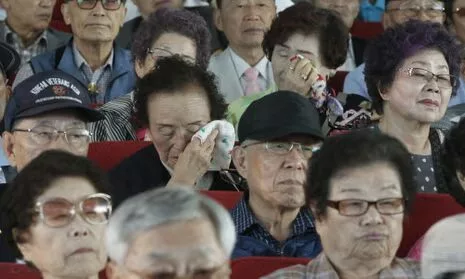
Citizens form orderly queues, making their way from one memorial to another, where they solemnly offer prayers and pay homage to the ruling party. It’s a unique spectacle, albeit one that may not exude the traditional notion of “fun.”
Know When to Hold it
In contrast to the United States, where public urination may warrant a citation, the act carries severe consequences in North Korea, often resulting in imprisonment in a concentration camp.
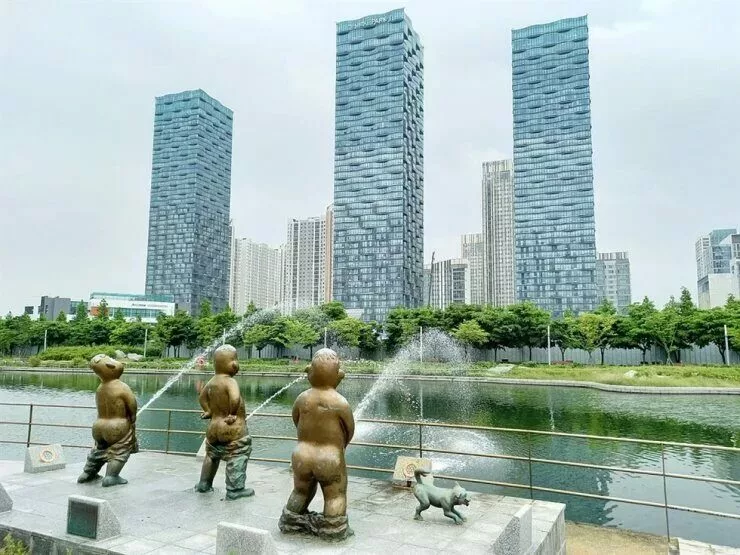
The grounds and infrastructure of North Korea are held in reverence as sacred, rendering public urination a form of protest and defiance against the ruling regime. Efforts to ensure adequate restroom facilities are crucial in curbing such acts of dissent.
New Structures
Erecting structures within the reclusive nation demands immense toil, particularly in the absence of advanced technology to facilitate the safe and efficient construction of skyscrapers.
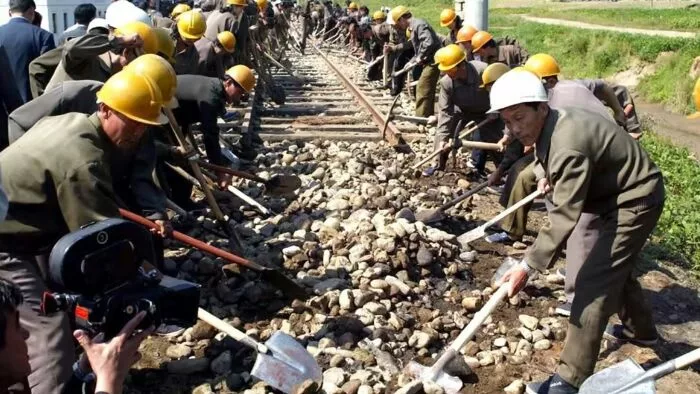
Despite the remarkable dedication and exertions of these individuals, who likely subsist on meager diets such as grass soup, the mere occurrence of any construction is indeed a marvel.
Food Shortages
Captured in this image are railway workers pausing for a smoke break following a day of laboring on the railroad tracks. Interestingly, the cargo cars they tend to are reportedly laden with human excrement destined for transportation to the countryside.
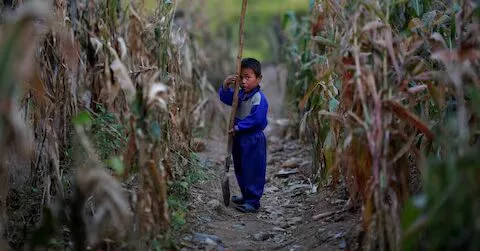
The North Korean government repurposes this waste as fertilizer to address the significant food shortages plaguing the nation. Such insights into the country’s agricultural practices may prompt reflection on the sustenance consumed by the photographer during his journey.
Zero Unemployment
The North Korean government proudly boasts of zero unemployment and emphasizes the abundance of meaningful employment opportunities for all citizens. However, the reality of these “meaningful jobs” in North Korea can be illustrated by tasks such as street sweeping, reminiscent of centuries-old broom-making techniques.

Given the government’s notorious reputation for dishonesty, perhaps skepticism is warranted regarding the accuracy of their unemployment statistics.
Day of the Sun
National Day in North Korea heralds a moment of authentic jubilation, transcending the constraints of daily life and external pressures. Families unite for festive picnics, partaking in the traditional rice wine, Soju.

Within the patriotic enclave, the holiday is referred to as the Day of the Sun, marked by a universal cessation of activities across private, government, and public sectors.
Defecting to China
Separated by this river, China occupies one bank while the other belongs to North Korea, a contrast easily discernible. The side adorned with towering, contemporary structures does not belong to North Korea, in case there was any doubt. Across the river lies Tumen, a bustling Chinese city.

During winter, when the river—also named Tumen—freezes over, North Korean citizens make a dash for Tumen seeking refuge. However, the perilous crossing is not without risks, as North Korean troops have been known to traverse the river to apprehend individuals.
Small-Scale Enterprises
In North Korea, private enterprise is unequivocally forbidden, yet authorities often overlook small-scale vendors like the woman depicted here, operating a stall in a rural countryside town.

It’s likely that she enjoys some form of police protection, given that her establishment may be one of the few places where local soldiers can procure goods not issued by the military, such as cigarettes and homemade baked goods, within a considerable radius.
Safety Protocols
The peculiar device, resembling a makeshift creation crafted by adolescents wielding sticks and twine during a summer camp arts and crafts session, serves as the primary means for construction workers to ascend and descend the skyscrapers of Pyongyang.

Employed for tasks ranging from painting to construction and window cleaning, these rudimentary contraptions lack documented statistics on the frequency of rope failures, potentially resulting in harrowing incidents of North Korean workers plummeting to the ground.
Sports and Fun
Captured in this distinctive image is a scene of children delighting in one of the rare sports or athletic pursuits permitted in North Korea. Despite stringent regulations that prohibit most Western influences, authorities display an unexpected fervor for children engaging in rollerblading. While other facets of their society, including the economy, infrastructure, and agricultural practices, may appear outdated, their approach to sports remains surprisingly contemporary, evoking a semblance of the mid-1990s.

However, it’s worth noting that children in rural areas may not have access to rollerblades, suggesting that these fortunate youngsters likely hail from privileged backgrounds, perhaps as children of the elite.
Living in a Simulation
This officially approved image depicting the bustling main train station in Pyongyang, North Korea, portrays a scene teeming with passengers awaiting their trains. However, the absurdity of this depiction becomes evident upon delving into the context behind the picture.

Surprisingly, at the time this photo was captured, train services had already ceased for the day. Yet, curiously, no effort was made to inform the actors posing as passengers of this fact.
Supreme Leader Marriages
This pair has converged at what may be deemed one of the most revered sites in North Korea—the central square in Pyongyang, adorned with larger-than-life bronze statues of Kim Il Sung and Kim Jong Il. However, the subdued atmosphere captured in the photograph makes it challenging to discern whether this depicts a genuine moment of matrimony or if the couple are merely actors simulating a wedding.

Alternatively, their subdued demeanor could hint at the possibility of hunger-induced weakness following a week subsisting solely on grass soup.
Slums
Captured from a lofty vantage point in the heart of Pyongyang, North Korea, this image starkly illustrates the glaring socioeconomic disparities within the city. As previously noted, the substandard construction and craftsmanship of taller buildings compel many residents to opt for humble dwellings with dirt floors.

In the event of a collapse, rebuilding a hut is a feasible endeavor, whereas the collapse of a concrete building could prove fatal, leaving little chance of survival.
Not so Different From us
In North Korea, capturing photographs of the military is strictly prohibited except during authorized events by officially designated photographers. Any deviation from this protocol, such as photographing a soldier in a casual moment, could lead to arrest.

The photographer responsible for capturing this candid scene of two soldiers sharing a cigarette risked deportation or imprisonment for violating these stringent regulations.
Starvation and Food Shortages
Following the depiction of a grocery store catering to average North Koreans in the urban center of Pyongyang, it becomes evident that rural villages lack access to food sources, compelling residents to rely on subsistence farming.
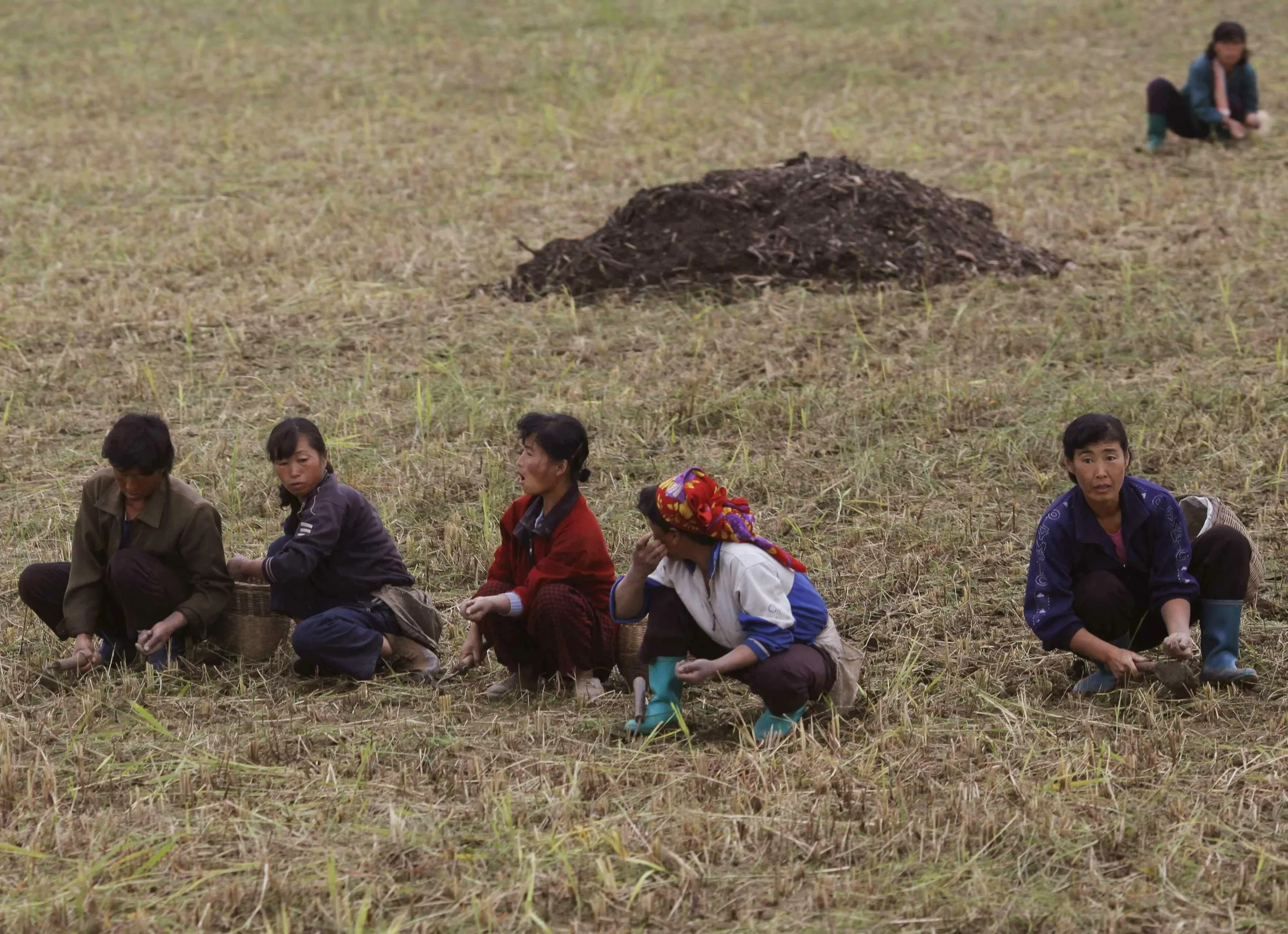
Unfortunately, inadequate soil management compounded by an extended period of drought has plunged many into starvation, prompting desperate measures such as consuming grass for sustenance. Such dire circumstances have prompted the government to publish a cookbook featuring recipes utilizing grass as an ingredient.
Pyongyang Marathon
Annually held in April, the Pyongyang Marathon offers participants an opportunity to traverse the city’s most iconic landmarks, with the full distance taking around four hours to complete. The 10-kilometer run extends over approximately 23 hours, while the half marathon typically spans 2.5 hours.
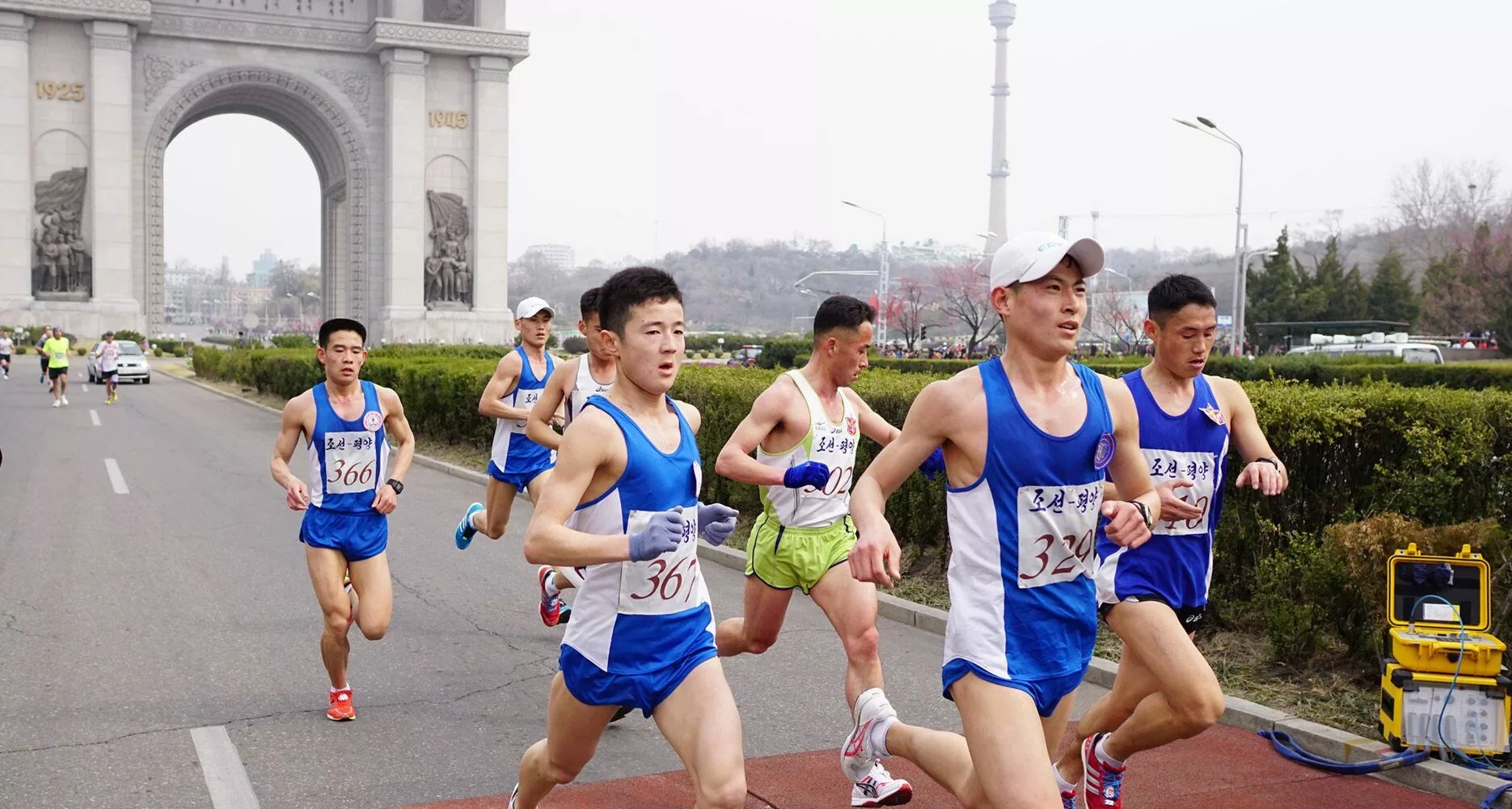
As runners near the culmination of this sporting spectacle, they are treated to a scenic tour of the countryside, adding a picturesque finale to their race journey following their exploration of the country’s architectural marvels.
High Voltage
Positioned on a peninsula, North Korea boasts extensive stretches of coastline and beaches, yet access to these areas is strictly prohibited. Evident in this covertly captured image, the entire coastline is cordoned off from the rest of the country by a formidable high-voltage electric fence.

Typically, fences serve one of two purposes: to confine or to exclude. In this instance, the presence of the fence strongly suggests its intended function is to confine rather than to permit access.
Soviet Influence
At first glance, this image might evoke memories of Soviet-era Russia, but it actually captures the skyline of Pyongyang, North Korea. Despite their outward appearance of strength and solidity, akin to many aspects of the Hermit Kingdom, these buildings are akin to precarious house of cards, susceptible to collapse at any given moment.
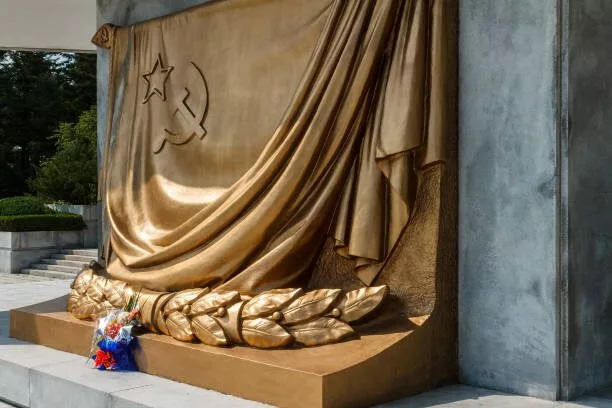
Such precarious living conditions have compelled many residents to opt for humble abodes, often consisting of dirt floor huts, as safer alternatives.
Travel Restrictions
The desolate scene at this North Korean train station is not due to a lack of rush hour commuters, but rather reflects the stringent restrictions on domestic travel imposed on North Koreans. Capturing such an image could have dire consequences for the photographer, potentially leading to incarceration or worse.
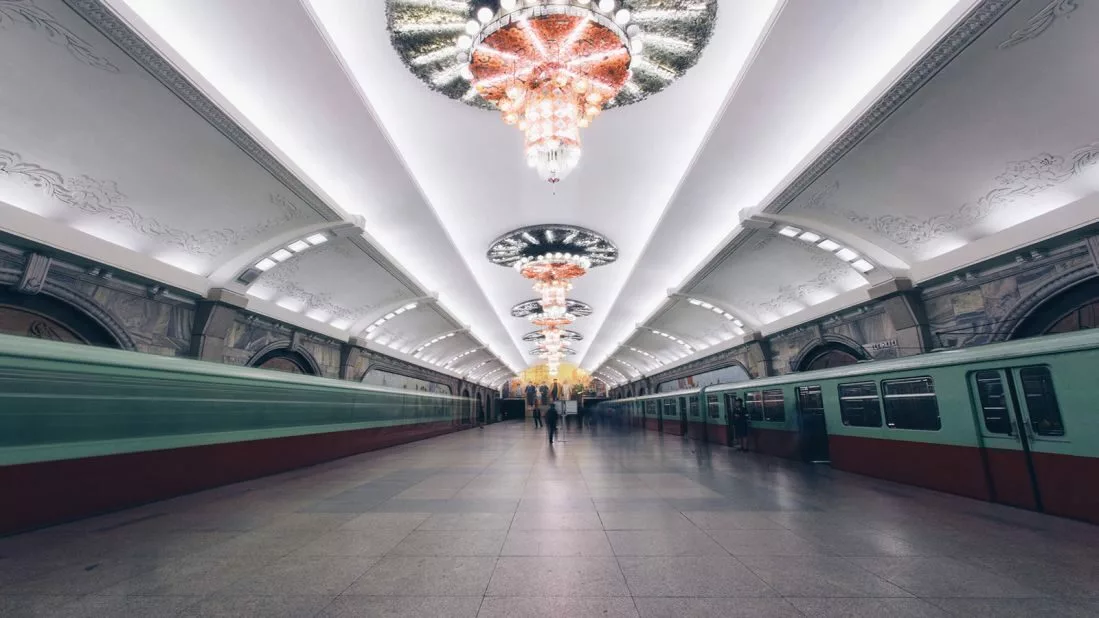
Despite North Korean propaganda’s efforts to paint a picture of a modern and prosperous economy, they fail to acknowledge that a thriving economy necessitates the freedom of movement for its people.
All Eyes on You
Drawing inspiration from George Orwell’s dystopian novel “1984,” the North Korean authorities, along with the military, maintain constant surveillance over the populace.
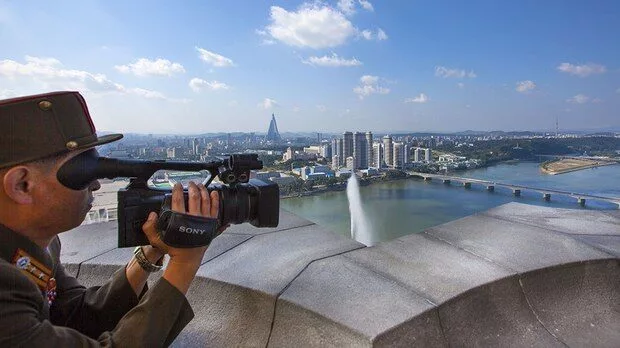
Hidden cameras and microphones are ubiquitous throughout the country, serving to enforce compliance with the regime’s directives. Even in the countryside, military watchtowers proliferate, not for defense against external threats, but rather to monitor the behavior of North Korean citizens.
Time to go Home
Displayed here are individuals exhibiting remarkable patience as they queue up to board their buses homeward in the North Korean capital, Pyongyang. Consider the inconvenience of enduring such a line after a taxing day at work.
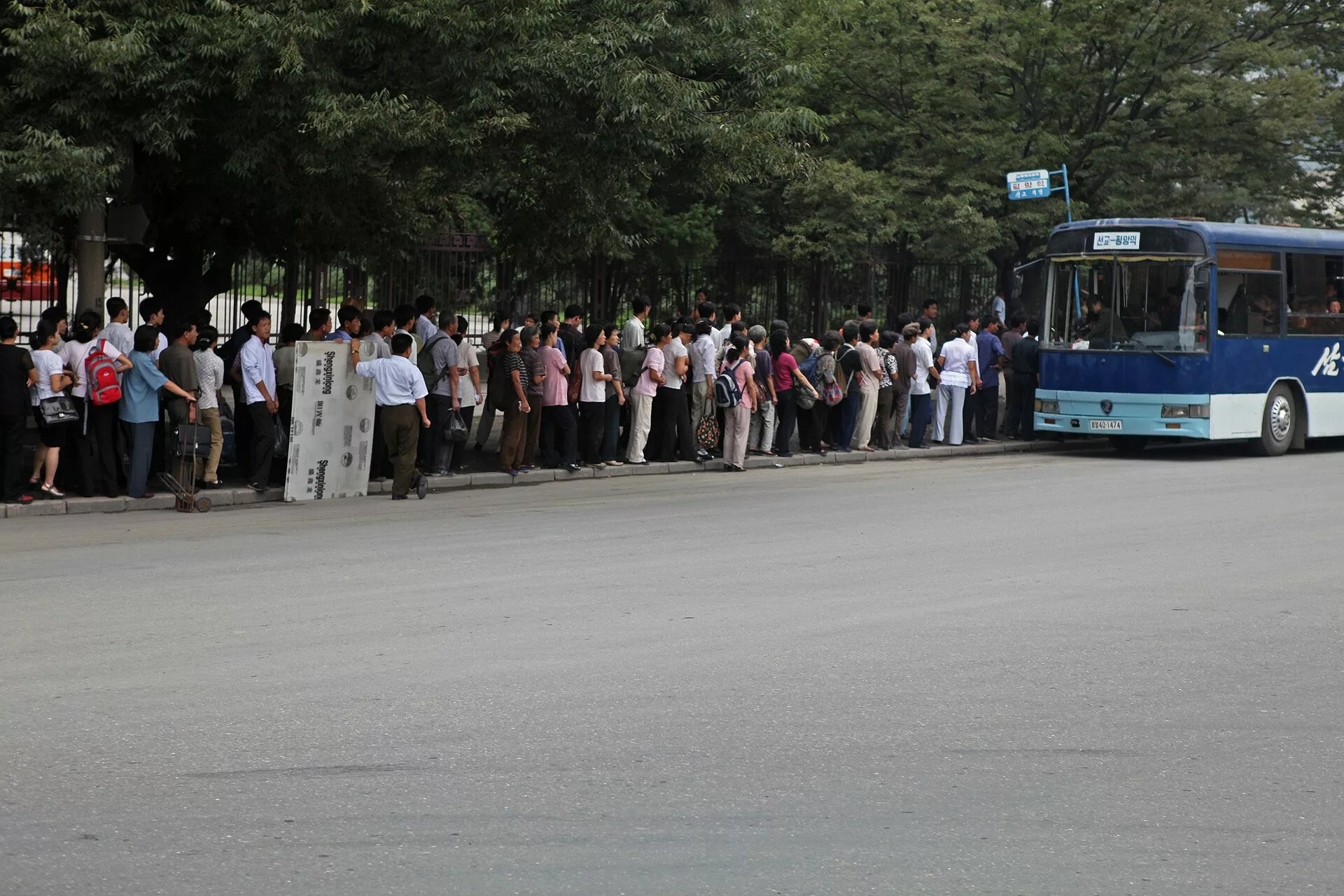
Yet, it remains unclear whether commuters face similar circumstances when traveling to their workplaces.
Shifting Villages?
To project an image of a thriving and content population, the North Korean government occasionally mandates entire villages to relocate to other vacant areas.
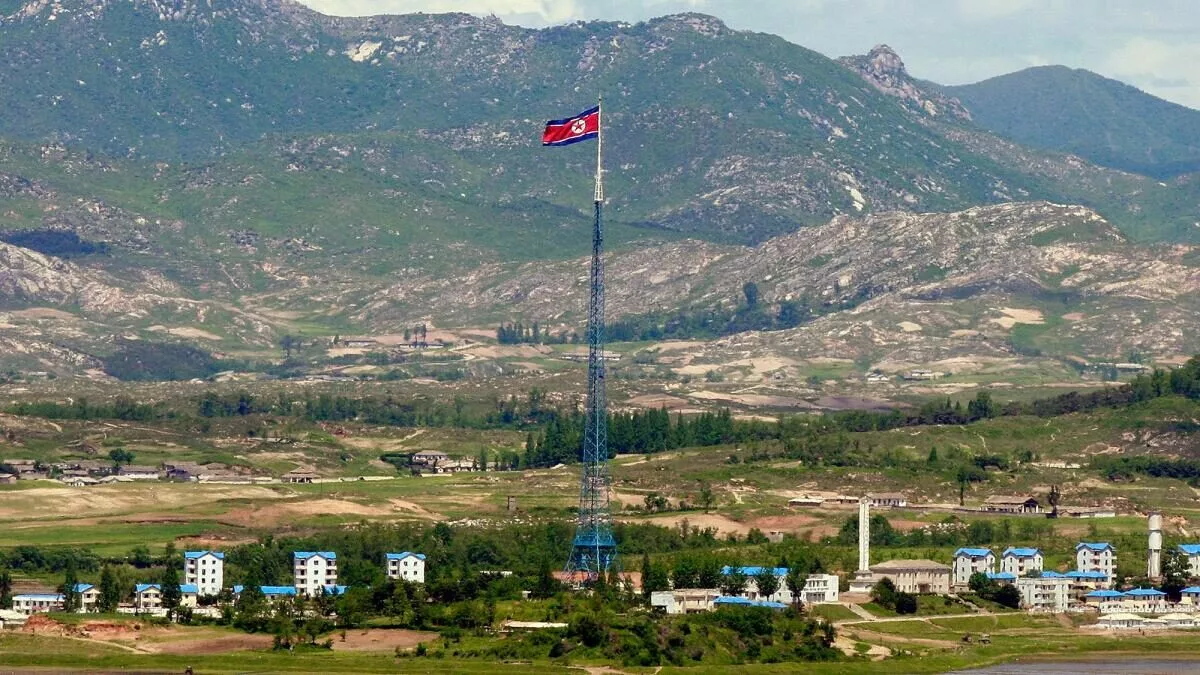
This tactic is employed to create the illusion, visible to foreign satellites, that the cities and towns across the nation are bustling with activity and vitality. However, as commonly acknowledged, a change of scenery can sometimes be a welcome experience.
Outdated Agriculture Techniques
In efforts to address food shortages among the populace, farmers are compelled to cultivate crops in challenging terrains, exemplified by this field strewn with boulders. With access to more advanced farming equipment surpassing that used by American settlers in the mid-1700s, the government could potentially mitigate the food scarcity issue.
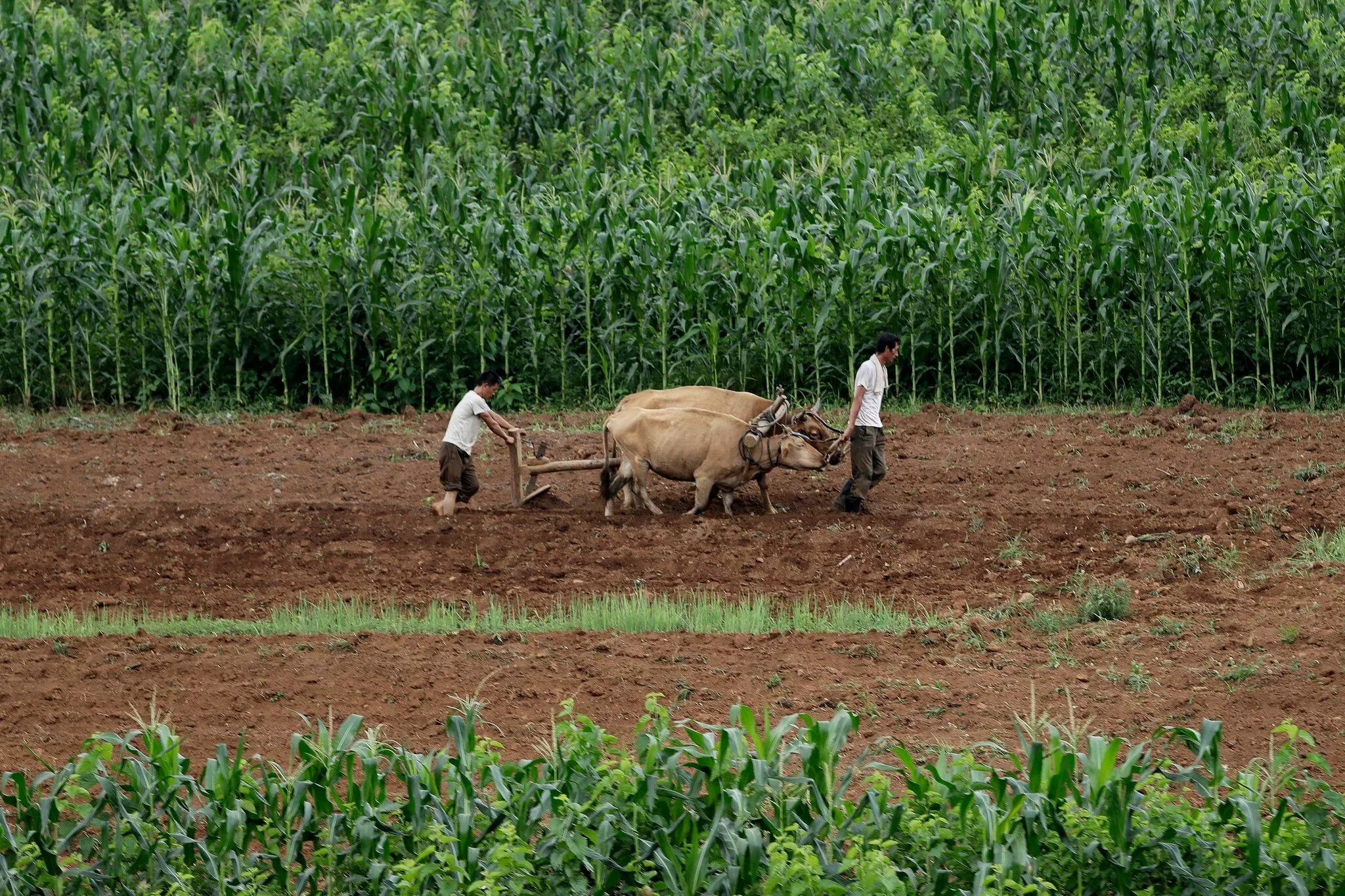
Regrettably, this individual must rely on antiquated tools like a hand plow to till the rocky soil, with hopes of yielding a harvest.
Hidden Entrepreneurship
The woman depicted here operates within the realm of the “gray market,” engaging in activities that exist in a legal gray area.

Setting up a private stall to vend various goods, she likely earns a respectable income from selling items like cigarettes, paper fans, and tea sets. Perhaps her earnings afford her the means to procure food, ensuring her livelihood.
Our exploration of North Korea has shed light on the complex realities faced by its citizens under authoritarian rule, economic challenges, and pervasive surveillance. Through their experiences, we have gained insight into both their resilience and vulnerabilities. As we reflect on our findings, we are reminded of the importance of seeking truth and understanding beyond the regime’s propaganda. Moving forward, let us continue to advocate for the rights and dignity of the people of North Korea, fostering empathy and compassion in our engagement with their plight.


